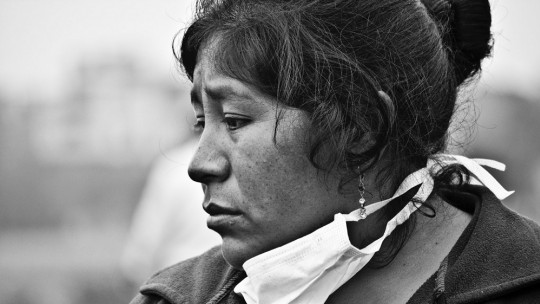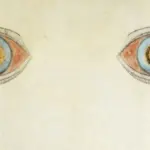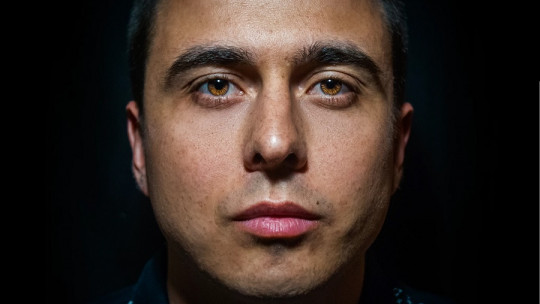
Dissociative disorders involve a breakdown in memory, identity, perception and/or consciousness processes. Within them we find trance and possession disorder caused by a shocking experience that has generated a lot of suffering in the person.
In this article we will learn about the symptoms of this disorder, how it is related to cultural and religious practices, and the differences between a trance state and a possession state. In addition, we will explain which cases are excluded to diagnose a disorder like this.
Trance and possession disorder: what is it?
Trance and possession disorder is a type of mental disorder classified as a subtype of Dissociative Disorder (conversion)m in the International Classification of Diseases (ICD-10). In the DSM-IV-TR (Diagnostic Manual of Mental Disorders), trance and possession disorder is called “Dissociative Trance Disorder.”
Dissociative disorders involve a break or disconnection in the processes of memory, consciousness, identity and/or perception That is, there is a lack of continuity (or disconnection) between thoughts, actions, identity and memories.
Trance and possession disorder includes only involuntary or unwanted trance states, which also take place outside of religious or culturally accepted situations. This disorder occurs more typically in some cultures than in others (for example in Latin American cultures).
It’s not?
Trance and possession disorder excludes all those states related to: schizophrenia, intoxication by a psychoactive substance, postconcussion syndrome, organic personality disorder and acute and transient psychotic disorders. That is to say, If any of these psychopathological conditions exist, it cannot be diagnosed a trance and possession disorder.
Causes
The causes of trance and possession disorder They are usually traumatic experiences that have involved great psychological suffering whether acute or prolonged, to the person suffering from the disorder.
It appears especially in adolescent women with psychological conflicts, family dysfunctions, difficulties in interpersonal relationships and with a history of abuse, mistreatment or significant emotional deficiencies.
In order to diagnose trance and possession disorder, It is important to rule out other possible non-psychiatric causes, such as neurological disorders (brain tumors, epilepsy,…) and the consumption of psychoactive substances.
On the other hand, a trance and possession disorder is not diagnosed when its symptoms are “normal” within the cultural and religious context of the person who manifests it (that is, when the symptoms can be “understood” within that context. , religion or cultural practice).
Symptoms
In trance and possession disorder, a series of characteristic symptoms occur. On the one hand, there is a temporary loss of the sense of identity and full awareness of the environment On the other hand, attention and awareness of the environment can be limited to one or two immediate and concrete aspects.
The person who suffers from it too exhibits strange, illogical, or incoherent language, and acts as if possessed by another person, by a spirit or by a “supernatural” force. It also manifests a set of particular and very expressive movements, postures and gestures.
In addition, the person who suffers from the disorder feels significant psychological discomfort, or there is a global deterioration in their functioning.
Trance state and possession state
Within the trance and possession disorder, we must differentiate two types of states that can occur: trance and possession. Thus, while during the trance state the “loss” of the habitual identity that occurs is not associated with the appearance of alternative identities, in the state of possession one or more distinct and alternative identities appear These identities also present characteristic movements, memories and attitudes.
Another difference between the two is that in the trance state the activity carried out by the individual is not complex (for example, he runs, falls, has convulsive movements, etc.), and on the other hand, in the state of possession the activities are complex ( For example, the person maintains coherent conversations, displays characteristic gestures, facial expressions in accordance with the cultural canons of the place, etc.).
Trance states in cultures
It is important to keep in mind (and as we have already mentioned), that trance and possession disorder It is not produced voluntarily nor is it framed in the cultural and religious context of the person
These voluntary states (and non-pathological ones, which also do not cause discomfort) represent the majority of trance and possession states that we can find in different cultures. However, we insist, trance and possession disorder is involuntary and causes significant discomfort.
This does not mean that the non-pathological states mentioned cannot sometimes involve symptoms typical of this disorder, and even be configured entirely as a disorder (but it is not that frequent).
Heterogeneity
Trance and possession disorder can present a lot of variability in different cultures especially with regard to the nature of the behavior expressed during the trance state, the presence (or absence) of dissociative sensory disturbances (for example deafness or blindness), the identity assumed during the state, and the presence or absence (or the degree) of amnesia following the episode.
That is, the same disorder can vary not only from one person to another, but also from one culture to another, especially in relation to how its symptoms manifest; This occurs even if the symptoms are the “same” (since a series of diagnostic criteria must be met in order to diagnose a trance and possession disorder).
Treatment
The treatment of trance and possession disorder is typical of dissociative disorders, combining psychotherapeutic and psychiatric methods (the latter to mitigate symptoms).








